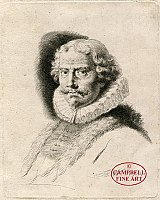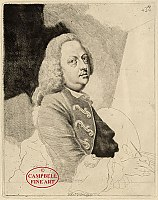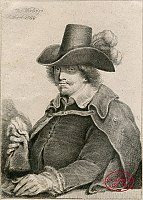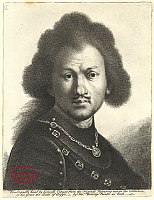 |
|
Thomas Worlidge1700 - 1766 |
|
|
Click on a picture for more details |
|
|
Thomas Worlidge was one of the first English printmakers to employ extensive use of the drypoint technique. Known in his lifetime as the English Rembrandt, due to the deceptive similarity with which he followed that master’s style, Thomas Worlidge became famous for his outstanding genius as a portrait artist largely through his miniatures; however, it was his superb portrait etchings and drypoints that were to extend his fame and assure his fortune. He was commissioned to paint the portraits of many of the most famous people of his time, including those of the Royal family – Gilpin was moved to comment on his work “No man understood the drawing of an head better”. After Thomas Worlidge died, his widow remarried and continued to sell his etchings privately; however, impressions from his widow’s edition can be identified from lifetime impressions through the presence of an engraved numeral, usually at the upper corner of each plate. These numerals were added to identify the title and price of each subject in relation to a list published for Worlidge’s widow (now Mrs. Ashley) in 1767. At an unknown date a very rare volume entitled The Select Works of Thomas Worlidge containing Fifty Etchings of Portraits, Fancy Heads and miscellaneous subjects was published by C.G. Dyer, for whom the plates were printed by Gold and Walton. Impressions from Dyer’s issue can sometimes be identified by the obvious wear to the plates themselves or by the type of paper on which they are printed. [more] |





